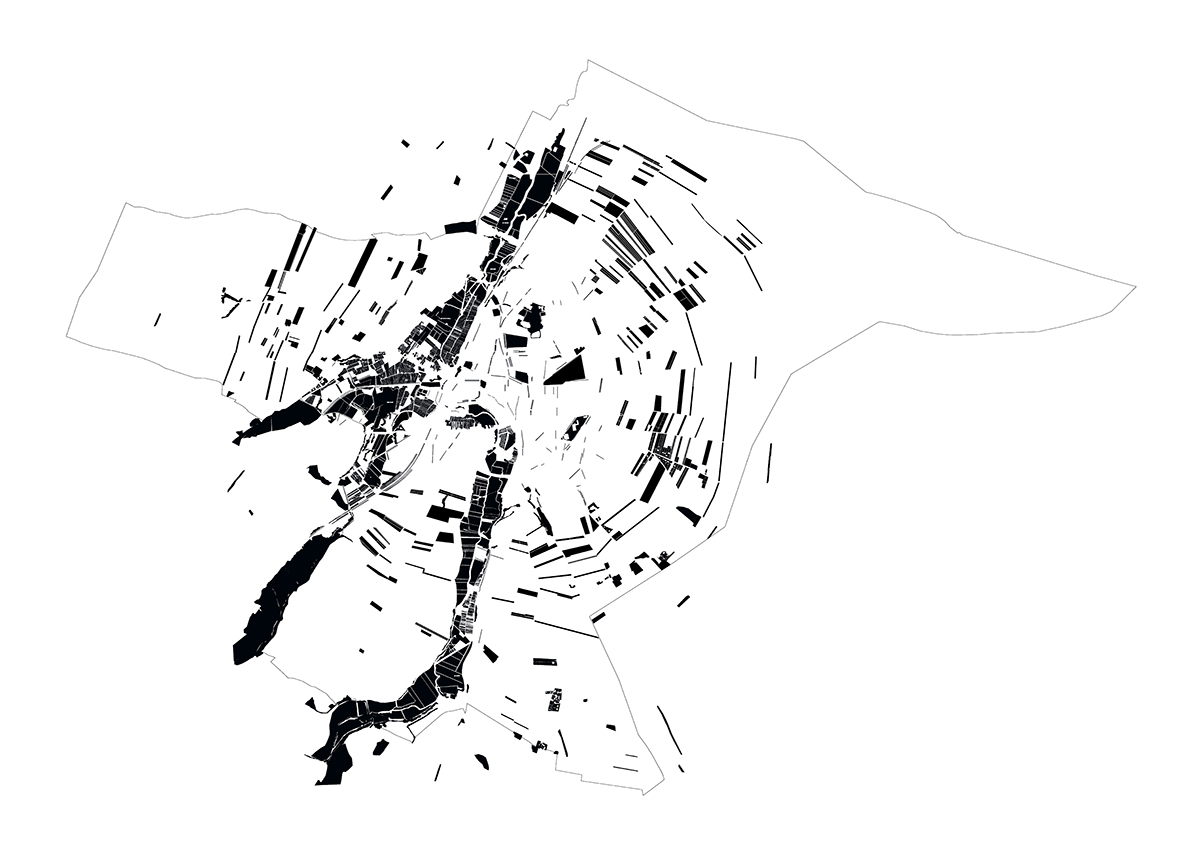Process of substitution
Certain agricultural layouts correspond to an ancestral work and to an almost inalienable quality of the ground. In order to transform territories like these, I intervene with an approach that focuses only on the nature of the components, substituting the existing for others. Everything remains in place yet is transformed.
The municipality of Issoudun appropriated a collection of small plots of land, susceptible to flooding, along the Théols River in the city center. We were placed in charge of transforming the whole into a public park. The plot design was medieval. Notwithstanding the extreme deterioration of the site, we were sensitive to the long history of working this land for horticultural purposes. We conceived of a process of substitution for these horticultural traces: everything remains in place yet changes in nature. Hedges replace fencing, flower beds take the place of abandoned vegetable gardens, decorative orchards and flowered meadows replace empty fields in neglect. The ground remains intact. The completed whole is made accessible to the public which succeeds very quickly in finding its bearings in this park where everything is new yet seems familiar.
The process of substitution is not merely deductive. In working on the transformation of traces through design and drawing, I rediscovered the pleasure of “elementary gardens”. This process belongs indeed to the realm of architecture. Gardens, prototypes, laboratories, these are the places where a transposed “landscape language” can be experimented with and put to the test. In following, such a language can be applied to much larger territories.
The territory project as process of transformation
Like a collection of natural mechanisms at work, I observe agricultural territories with all the functions, procedures, and parts that make them up. In designing a project, in modifying a territory, the “language” of the landscape itself is altered. This is not merely the conceiving of form, but of a process of transformation.
Ten years separate the two Issoudun projects. The park along the Théols served as a prototype for the Issoudun landscape. Through its recent sprawl, the city has grown more uniform and commonplace in its makeup, losing much of its geographical legibility. I explored two areas of research: how to approach and manage the limits between habitat and agriculture, and how to transform the valleys. Along the city's perimeter, we discovered fragments of agricultural plots both amongst and beyond residential areas, constituting together a sort of “backstage” to the city. We proposed the purchase and progressive planting of these plots, in the image of the orchards that surrounded certain medieval cities in the past. These plots become the public space appearing here and there amongst housing estates, constituting together promenades, all in delineating a new shape and contour to the city and its future extensions. Here again there are substitution mechanisms at work, aesthetically determining the landscape's “composition”. Neither a restoration, nor a recovery, but a unique invention.

